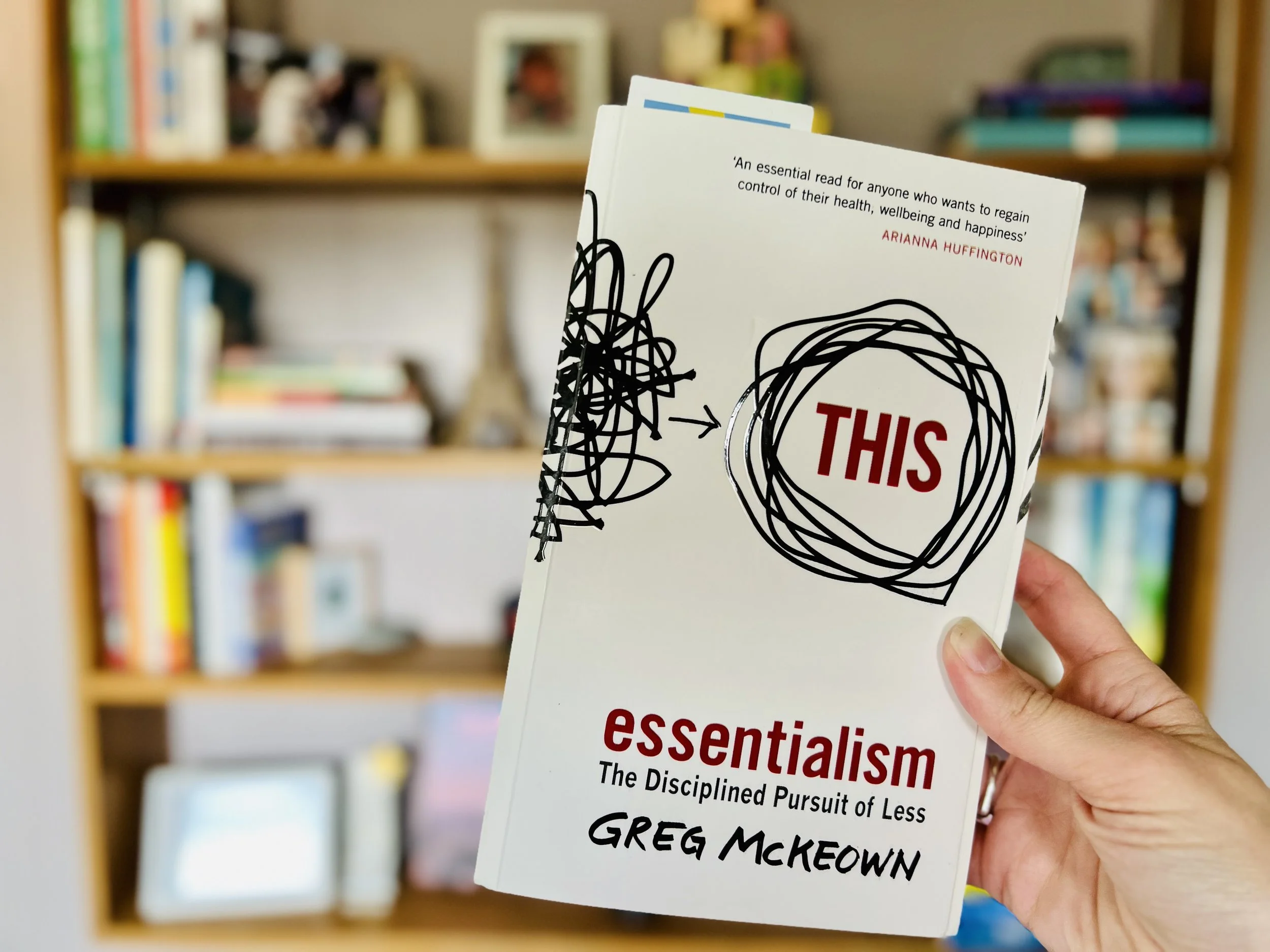Essentialism for Giving
I read a lot of non-fiction. If we happen to get on the topic of books, there’s a good chance I’ll rattle off a list of several that I think might unconventionally suit your interests. Right now, the book I’ve been recommending to nearly everyone is Essentialism, by Greg McKeown.
To be clear, I don’t think all books are for everyone. However, Essentialism is one of those books that culturally, I think there’s a little something for everyone to learn from, particularly in the world of philanthropy.
It came up for me at a conference I attended recently where I heard a speaker say something to the effect of - if you tell me what your mission and vision are, I’m almost guaranteed to get excited about all the impact you have in the community. She was referring to the fact that for those of us in the industry, we get it. We can easily understand the importance of your mission. Then she followed with one of the greatest truths in philanthropy we often forget: even if I ‘get it’ you still might not be a top priority for me in my giving. Ouch. But when I thought about it more, I realized this is exactly it, and it’s great to be thinking this way!
In his book, McKeown talks about how we can discern the trivial many from the vital few. It’s a lens he uses to help define his essentials of life, work, play, time, etc. In philanthropy, this is a huge piece of our work no matter what side of the gift we’re on - whether you’re a fundraiser looking for the dedicated donors, or a philanthropist trying to make an impact - we have to narrow our focus to find the gems in order to achieve the most impact.
The Challenge of Overcommitment in Philanthropy
The world is full of incredible, meaningful, and impactful philanthropy. The challenge isn’t finding good causes—it’s avoiding overcommitment to all of them. But we do overcommit—because we’re human. We hear a compelling story, feel the emotional tug, and give a little here and a little there. Over time, we’ve spread our resources thin, making small contributions to many causes instead of focusing on a few where we could make a real difference.
I used to ask my fundraising students how they reacted when Arms of the Angel came on TV. You know the commercial—first the song, then the heartbreaking images of animals in need, followed by Sarah McLachlan’s plea to save them. Their responses usually fell into three groups: (1) donate immediately to ease the discomfort, (2) change the channel or mute the request, or (3) genuinely engage and learn more. That third group—the people who intentionally align their giving with their values—is the smallest.
The question we always discussed was: Is this an effective strategy? The answer, of course, is yes—it works, or they wouldn’t keep running the ad. But is it the most effective way to connect the right donor with the right cause? Probably not. It plays on impulse rather than intentionality, leading to reactive rather than strategic philanthropy.
This is where Essentialism offers a powerful lesson: instead of reacting to every emotional appeal, what if we applied discernment to our giving? What if, instead of spreading ourselves thin, we focused our resources on the causes that align most deeply with our values and where we can create the most impact?
Applying Essentialist Principles to Giving
Here are some practical tips that fundraisers and philanthropists can take, blending Essentialism principles with a mindset shift toward more intentional giving and fundraising:
For Philanthropists: Giving with Intention
Define Your Philanthropic “Why” – I’ve shared about this before, but before giving, take time to articulate your core values and priorities. What causes matter most to you? What kind of impact do you want to have?
Adopt a “Less but Better” Approach – Rather than giving small amounts to many organizations, focus on a few that align deeply with your values and where your support can be most transformative.
Learn to Say No (or Not Now) – Every cause is worthy, but not every cause needs to be your cause. Practice saying no without guilt, knowing that by staying focused, your giving will be more impactful.
For Fundraisers: Engaging the Right Donors
Seek Alignment Over Volume – Instead of trying to reach every potential donor, focus on cultivating relationships with those who genuinely resonate with your mission. A well-aligned donor is more likely to be deeply engaged and committed over time.
Help Donors Focus – Be a guide, not just a solicitor. Help donors clarify their philanthropic priorities and show them how your organization fits into their bigger vision.
Measure and Communicate Impact – Show donors that focused giving leads to tangible change. Instead of just sharing broad numbers, provide meaningful stories and metrics that demonstrate how their contributions make a difference.
By shifting from a reactive, scattershot approach to a focused and intentional one, both fundraisers and philanthropists can create a more powerful and fulfilling philanthropic experience. It’s not about giving or fundraising less—it’s about giving better.
An Invitation to Rethink Philanthropy
There’s no single “right” way to give. Sometimes, responding to a request with swift generosity is exactly what’s needed. And there’s also immense value in taking an intentional approach—one that fosters deeper connections, greater understanding, and long-term impact.
By applying essentialist principles to philanthropy, we can shift from reactive giving to purposeful engagement. Instead of spreading resources thin, we can focus on what truly matters, aligning our support with the causes where we can make the greatest difference.
So, how might you rethink your philanthropic approach? Where can you apply more focus, clarity, and intention in your giving? And how might you deepen your connection with your local community in a way that leads to lasting change?

